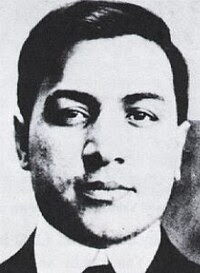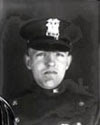Better Times
Born in Ontario, Canada, to a building materials salesman and his wife, Hartman is the fourth of eight children in the family ... he is 10-years-old when his parents move to the United States, first going to Connecticut, before finally settling in southern California where the future comedian becomes the class clown at Westchester High (one of the folks he entertains with his antics is future Manson Family maniac and would-be presidential assassin. Lynette "Squeaky" Fromme) and later studies art at Santa Monica City College and California State University, Northridge. Exploring life beyond schooling, before becoming a comic, Hartman is a roadie that literally holds the bass drum of Buddy Miles down during an L.A. concert given by Jimi Hendrix, in his first TV appearance he wins an episode of the Dating Game (he will be stood up by the woman on the day of their planned date), running the graphic arts company he creates, Hartman comes up with the backdrop logo that Crosby, Stills, Nash, and Young still use (Graham Nash will perform at the comedians funeral), and he creates over 40 album covers for bands that include Steely Dan, Poco, and America.
Hartman - 1978
Then in 1975, at the age of 27, Hartman is bit by his comedy bug during a performance of the improvisational jokers, The Groundlings ... a group he will be one of the stars of by 1979 (caught up in the energy and wit of The Groundlings, Hartman jumps on stage and joins in). From there it is one comedy success after another for Hartman. With his friend Paul Reubens, he creates the character of Pee-Wee Herman (he will appear on both The Pee-Wee Herman Show and Pee-Wee's Playhouse, and co-write the movie script for Pee-Wee's Big Adventure), he begins doing voice-overs for cartoons and commercials, in eight seasons on Saturday Night Live Hartman becomes one of the show's stars as he creates over 70 different characters (he will win a writing Emmy for his work on the show in 1989), making roughly $50,000 per episode, he will star as radio news anchor Bill McNeal on the NBC hit, Newsradio, for four years, and from 1991 to 1998, he will voice numerous characters (like Troy McClure) on The Simpsons (and in his spare time he enjoys driving race cars, sailing, target shooting, flying his plane, and playing the guitar).
As President Clinton on SNL
Sadly for the comedian, his comedy success does not carry over to Hartman's personal life. Searching for his soul mate, he marries Gretchen Lewis in 1970 (they divorce in 1981), real estate agent Lisa Strain in 1982 (they last three years), and finally, former model and aspiring actress Brynn Omdahl in November of 1987. Omdahl gives Hartman two children, a boy and a girl, Sean and Birgen, but she also gives the comic a plethora of headaches to deal with on an almost daily basis as the pair grows apart over Hartman's many successes and Omdahl failure to find meaningful work, and the continuing drug and alcohol use of the actress. Tensions mounting, the couple's problems boil over when Hartman states he will dump Omdahl if she starts drinking and taking drugs again (at the time of her death she will have booze, cocaine, Zoloft, and a large portion of Buca di Beppo Italian food in her system), when his wife returns intoxicated from a dinner meeting with producer and writer, Christine Zander.
Omdahl the Model
Still stewing about the argument after her husband goes to bed, continuing to put pollutants into her body that horribly cloud her thinking, sometime after 2:00 in the morning, Omdahl makes her way into the couple's bedroom, grabs a hidden Smith & Wesson .38 pistol from the suite's bathroom, and from a distance of less than 18 inches, puts three bullets into her instantly dead husband (apparently in the middle of a good dream. Hartman's corpse seems to be smiling when authorities arrive in the morning). One round enters Hartman's neck just below his chin, another pellet of lead hits the comic in the right forearm before lodging in his chest, and the kill shot enters Hartman's head just above the bridge of his nose before coming to rest in his brain. Argument over for good, the widow then starts getting the word out that her husband is gone!
Happier Days
First to get the word is Omdahl's longtime friend, Ron Douglas. Not believed when she calls to tell Douglas she has killed Hartman, she also isn't at first believed when she shows up at his apartment twenty minutes later, intoxicated, hysterical, and attired in a long sleeve t-shirt, white pajama bottoms, and a set of lightly colored argyle socks with no shoes, clutching a Prada purse (while this is all going on, her two children are alone and still sleeping in their bedrooms). Tears, passing out, and vomit bouts in the bathroom finally sober up Omdahl enough that she can drive home (with Douglas following). Back at the crime scene, Douglas becomes a believer when he sees Hartman's bloody corpse spread out on his bed and calls 911 ... while Omdahl contacts three more disbelieving friends and her sister Kathy in Wisconsin with the news, before locking herself in the bedroom with her husband's body just as the police arrive. Children safely escorted out of the house, police bang on the bedroom door but are met with only wails of sorrow from inside ... and then silence, after a hearing a single shot come from inside the room. Settling into bed beside Hartman, Omdahl places the two-inch barrel of her Charter Arms .38-caliber 5-shot pistol in her mouth and pulls the trigger.
Clean-up
In the aftermath of the tragedy, the couple's two children will be raised by Omdahl's sister and brother-in-law (not coming into any of the estate's $1.23 million in assets until they are 25), a wrongful death lawsuit against Pfizer (the manufacturer of Zoloft) and Omdahl's psychiatrist will be settled out of court, and Hartman is cremated at Forest Lawn Memorial Park, and his ashes are scattered at Catalina Island's Emerald Bay. Widely mourned, in the years that follow Hartman receives a star on Canada's Walk of Fame in Toronto, and another on the Hollywood Walk of Fame.
A Funny Man
















 Two Gun
Two Gun